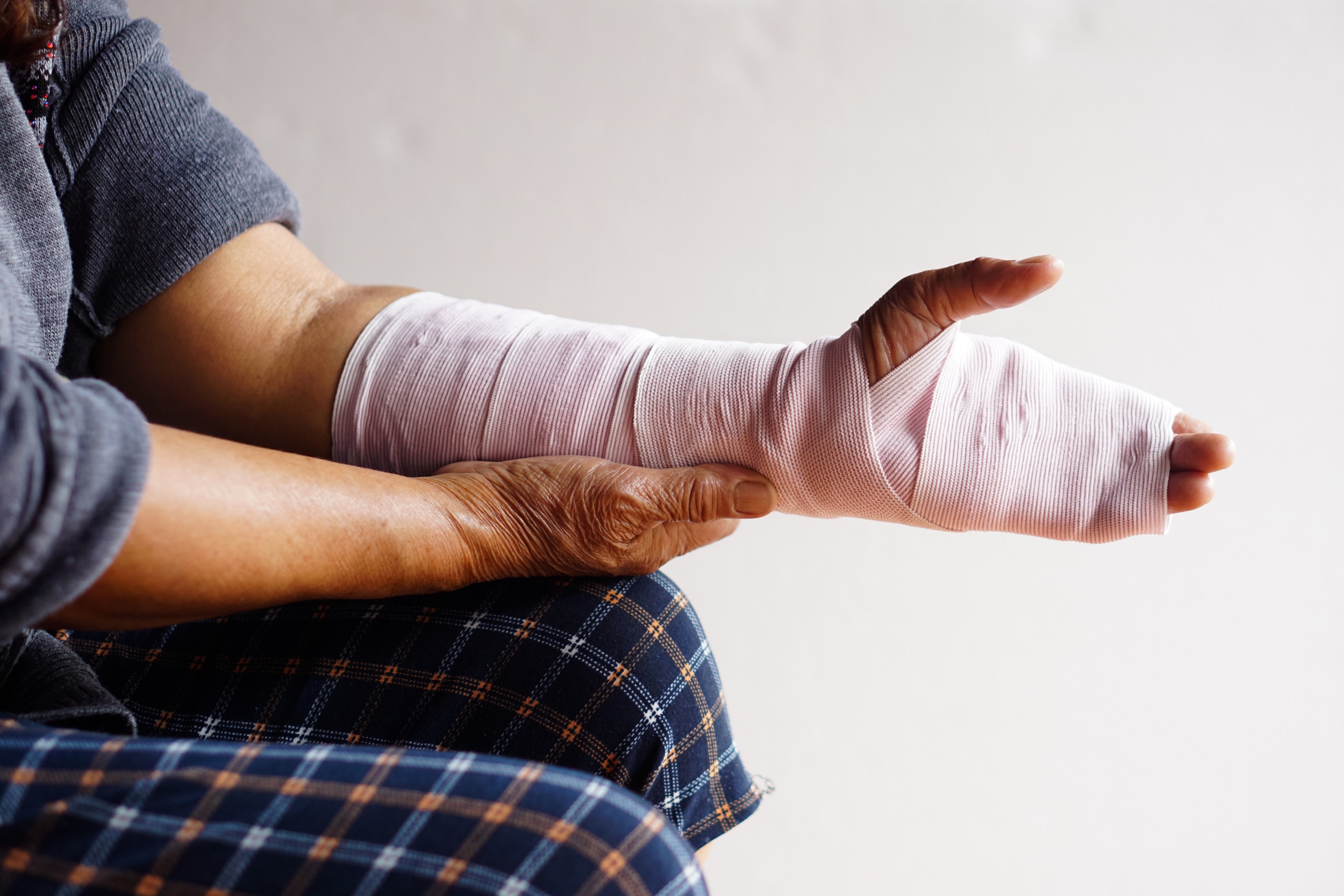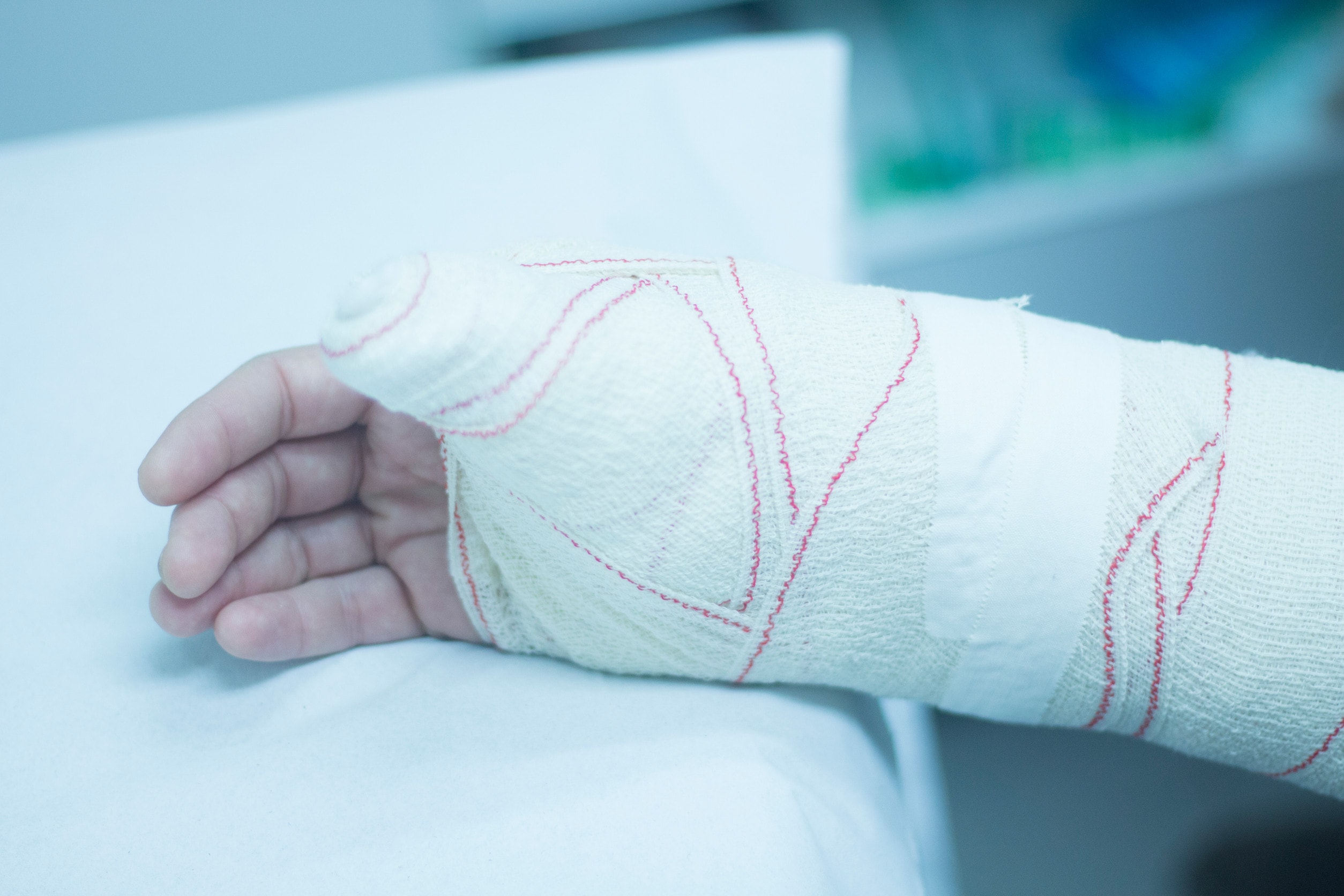Fracturing your wrist can disrupt your life in unexpected and serious ways. Whether it was caused by an accident on the road, in a public place, or at work, you may be wondering how to sue for wrist injury compensation. This guide explains all you need to know about the process, beginning with a look at the criteria for starting a personal injury claim.
Our guide will then explain what compensation can cover and how it might be calculated. You’ll also learn about the evidence that can support your case and whether there are any deadlines for starting a wrist injury compensation claim.
As you read further, you’ll see some examples of accidents that can cause wrist injuries and potentially result in a compensation claim. Finally, you’ll find guidance on how a solicitor from our panel can help you claim through a No Win No Fee agreement.
Contact Us
If you’re ready to claim compensation, contact our team of advisors today for a free consultation and to check your eligibility. They are here to help. Get in touch by:
- Calling us on 0800 408 7827
- Contacting us online
- Using the live chat feature
Frequently Asked Questions
- How To Sue For Wrist Injury Compensation
- The Average Payout In Wrist Injury Claims
- How Long Do I Have To Claim For A Wrist Injury?
- What Accidents Can Be Covered In An Injured Wrist Claim?
- Examples Of The Most Common Wrist Injuries
- How Can I Prove My Injured Wrist Was A Result Of Negligence?
- What A No Win No Fee Solicitor Can Help Me With
- More Information
How To Sue For Wrist Injury Compensation
To make a wrist injury compensation claim, the first step is understanding if you’re eligible to claim. A successful claim must meet the following criteria:
- Duty of care: Someone owed you a responsibility for your safety.
- Breach: They failed to uphold that duty.
- Causation: You suffered a wrist injury directly due to their breach.
For instance, an employer might breach their duty of care to you if they fail to provide you with sufficient manual handling training. You might have grounds to claim compensation if that lack of training resulted in you sustaining a fractured wrist. Later on in this guide, we’ll outline several other scenarios where you may have a case for wrist injury compensation.
Every wrist injury claim is unique, and your individual circumstances will determine whether you have a valid case. Contact our advisors today to discuss your experience and find out how to sue for wrist injury compensation.
The Average Payout In Wrist Injury Claims
All wrist injury claims are unique, so any ‘average compensation payout‘ might not be relevant to your individual circumstances. When asking, ‘How much compensation for a wrist injury?’ it can be useful to consult the Judicial College Guidelines (JCG). This document compiles suggestive compensation brackets for a multitude of injuries, including wrist fractures. Solicitors use this publication to help value general damages.
General damages are one of 2 potential heads of compensation and are awarded for your physical pain, psychological harm, and loss of amenity (impact on quality of life). This head may consider factors like how severe your wrist fracture is and whether there is a long-term effect on such things as mobility.
We’ve included some JCG brackets in the table below. Please keep in mind that these are only included for guidance purposes, and that the first figure isn’t from the JCG.
| Injuries | Compensation |
|---|---|
| Multiple severe injuries plus special damages, including lost earnings | Up to £100,000+ |
| Wrist (a) | £58,710 to £73,050 |
| Wrist (b) | £29,900 to £47,810 |
| Wrist (c) | £15,370 to £29,900 |
| Wrist (d) | £7,420 to £12,630 |
| Wrist (e) | In the region of £9,070 |
| Wrist (f) | £4,370 to £5,790 |
Can I Claim For Other Damages Caused By My Wrist Injury?
Yes, your wrist injury compensation claim can also include special damages to cover your financial losses. These losses must have been caused by your wrist injury and can include:
- Lost earnings due to time off work.
- Medical expenses (e.g. physiotherapy, splints, and private treatment).
- Petrol, bus fares, or train tickets paid to attend medical appointments.
- The cost of care from loved ones or professionals. For instance, you might need help with cooking or shopping.
However, you will need documentation in order to claim for such losses (and any other relevant out-of-pocket expenses). This proof can range from receipts for special equipment to payslips showing a loss of income.
Don’t miss out on pursuing compensation. Our advice services are live 24/7 and can help you determine whether you have a valid personal injury claim.
How Long Do I Have To Claim For A Wrist Injury?
Under the Limitation Act 1980, you usually have 3 years from the date your accident occurred to begin a personal injury claim.
There are exceptions to this rule where the time limit is paused for individuals who cannot claim by themselves:
- Minors: The 3-year time limit is put on hold until a child turns 18. However, a litigation friend can claim on their behalf while time limits are paused. Any eligible adult can become a litigation friend (though often a loved one or solicitor) and take on the responsibility of acting in a claimant’s best interests.
- Mentally incapacitated persons: Time limits are suspended indefinitely unless capacity is regained. In such cases, the 3 years take effect from the date that the capacity returns. As with minors, a litigation friend can claim on their behalf at any time while limits are suspended.
We strongly advise speaking with our advisory team as soon as possible to see if you have enough time to claim wrist injury compensation. So, please call today to find out how long you have to start a claim and check if any exceptions apply to your case.
What Accidents Can Be Covered In An Injured Wrist Claim?
There are many different accidents that can be covered by an injured wrist claim, such as the following:
Road Traffic Accidents
All road users, including drivers, motorcyclists, pedestrians, and cyclists, owe each other a duty of care. This duty requires them to use roads in a way that avoids causing injuries to one another (and to themselves). It also means following the Road Traffic Act 1988 and the Highway Code.
Wrist injuries in road traffic accidents can have many causes, such as:
- While you are stopped at a red light, a speeding car rams into the rear of your vehicle. They had been unable to break in time, leaving you with several fractures, including to both wrists.
- A motorist on their mobile phone fails to notice you walking along a pelican crossing. As a result, you are hit head-on and left with multiple injuries, including a broken arm and a fractured wrist.
Public Place Accidents
You are owed a duty of care from anyone who is in control of a public place that you are a visitor to. That obligation is set by the Occupiers’ Liability Act 1957, which requires that practicable measures are taken to ensure your reasonable safety.
If an occupier like a council or business fails to meet this duty, causing you to injure your wrist, you may be able to claim compensation in scenarios like:
- You slip and fall while shopping at a supermarket after staff leave a spill unattended and don’t place ‘wet floor’ signs to alert customers. The heavy fall results in you breaking your wrist and hand.
- Despite being aware for some time that there are broken pavement slabs on a busy high street, a council fails to take any action to make repairs or cordon them off. Subsequently, you trip and fall heavily on the uneven pavement, fracturing your wrist in multiple places.
Workplace Accidents
Your employer has a duty of care to take reasonable steps to ensure your health, wellbeing, and safety. That duty towards you is established by the Health and Safety at Work etc. Act 1974 (HASAWA).
You might be able to make a claim if your wrist injury was caused by an employer not meeting their obligations by:
- Failing to conduct regular maintenance on warehouse machinery. This results in the equipment malfunctioning and trapping your hand, causing crush injuries and a wrist fracture.
- Not conducting a risk assessment before having you handle a delivery. That failure leaves you with a severe wrist injury when you drop the package while trying to move it in the back of the store.
No matter the circumstances of your wrist fracture, you may have grounds to claim. Contact our advisory team today to share your experience and get more guidance on how to sue for wrist injury compensation.
Examples Of The Most Common Wrist Injuries
Below, you can see some examples of the most common wrist injuries, such as:
- Fractured wrist: Such as a Colles’ fracture or a fractured scaphoid.
- Broken wrist: Where the bone breaks completely.
- Sprained wrist: Caused by torn ligaments.
- Soft tissue injuries: Including strains and bruises.
Understanding the nature and extent of your wrist injury is essential when making a claim. You can reach out to our advisory to talk about your specific injuries in complete confidence and get a free, no-obligation case assessment.
How Can I Prove My Injured Wrist Was A Result Of Negligence?
You will need evidence to prove that your wrist injury was the result of someone else’s negligent conduct. Without it, it can be difficult to prove that the other party was at fault, and that their actions (or inaction) directly caused your wrist injury.
Examples include:
- Medical records detailing the extent of your wrist injury, the treatment you have needed, and the prognosis for recovery.
- Accident report forms, if your injury occurred in a public place or at work.
- Photographs of the scene or injury. For instance, you could photograph a broken pavement slab to show the cause of your trip and fall. You would need to use a ruler or measuring tape to show the depth or height of the broken slab.
- Witness contact details so their statement can be taken later by a solicitor.
- Details of a driver’s insurance, as well as their car model, make, and registration if the wrist injury occurred in a road traffic accident.
- CCTV footage or other recordings, if available.
If you work with one of the personal injury solicitors from our panel, you will get all the help you need to gather and organise this evidence. They have years of combined experience, giving them the expertise needed to build the strongest possible case. Get in touch today to find out more about how they can support your claim for wrist injury compensation.
What A No Win No Fee Solicitor Can Help Me With
Our panel of No Win No Fee solicitors can offer expert, dedicated support at every stage of the claims process. With years of experience handling wrist injury claims, they understand what it takes to secure compensation for their clients.
Here’s how they can help you:
- Expert guidance: Get clear, honest advice and support you can rely on, whether you need terms clarified or have questions about the process itself.
- Evidence gathering: From medical records to witness statements, you can get help with obtaining compelling proof for your case.
- Independent medical assessments: A solicitor from our panel can arrange a medical to fully assess your wrist injury and support your claim.
- Compensation: Our panel of solicitors are expert negotiators, helping them win compensation for their clients across the country.
Keep reading as we next discuss another benefit to working with one of the specialist solicitors making up our expert panel.
How Can A Conditional Fee Agreement Help Me?
A Conditional Fee Agreement (CFA) can help you make a compensation claim without the worry of spiralling solicitor fees. It’s a type of No Win No Fee agreement and is the basis on which our panel of solicitors operate.
CFAs ensure that the clients our panel of solicitors represent nationwide, people just like you, have the opportunity to pursue compensation regardless of your financial situation. Here’s how a CFA works:
- You do not have to pay any solicitor fees to start your claim.
- No additional solicitor fees during the claim itself.
- No solicitor fees to pay at all if the claim is lost.
If your claim is successful, a capped percentage of your compensation will be deducted. This success fee is agreed upon before your claim begins and acts as payment for the solicitor’s work. Thanks to the cap being in place, you can focus on your recovery with the peace of mind that you’ll get the bulk of compensation.
Contact Our Advisors
Still wondering how to sue for wrist injury compensation? Whether you’re dealing with a broken wrist, soft tissue injury, or permanent disability, our expert advisors are ready to help. Contact them today by:
- Calling us on 0800 408 7827
- Contacting us online
- Using the live chat feature
More Information
For more helpful personal injury guides:
- Learn how to claim compensation for loss of sight
- Find out how to make a toe injury compensation claim
- Get help with making a leg injury at work claim
Or, for further resources:
- Learn about first aid from the NHS
- Find out how to request CCTV footage
- Get advice on professional standards for doctors from the General Medical Council (GMC)
Thank you for reading our guide on how to sue for wrist injury compensation.





